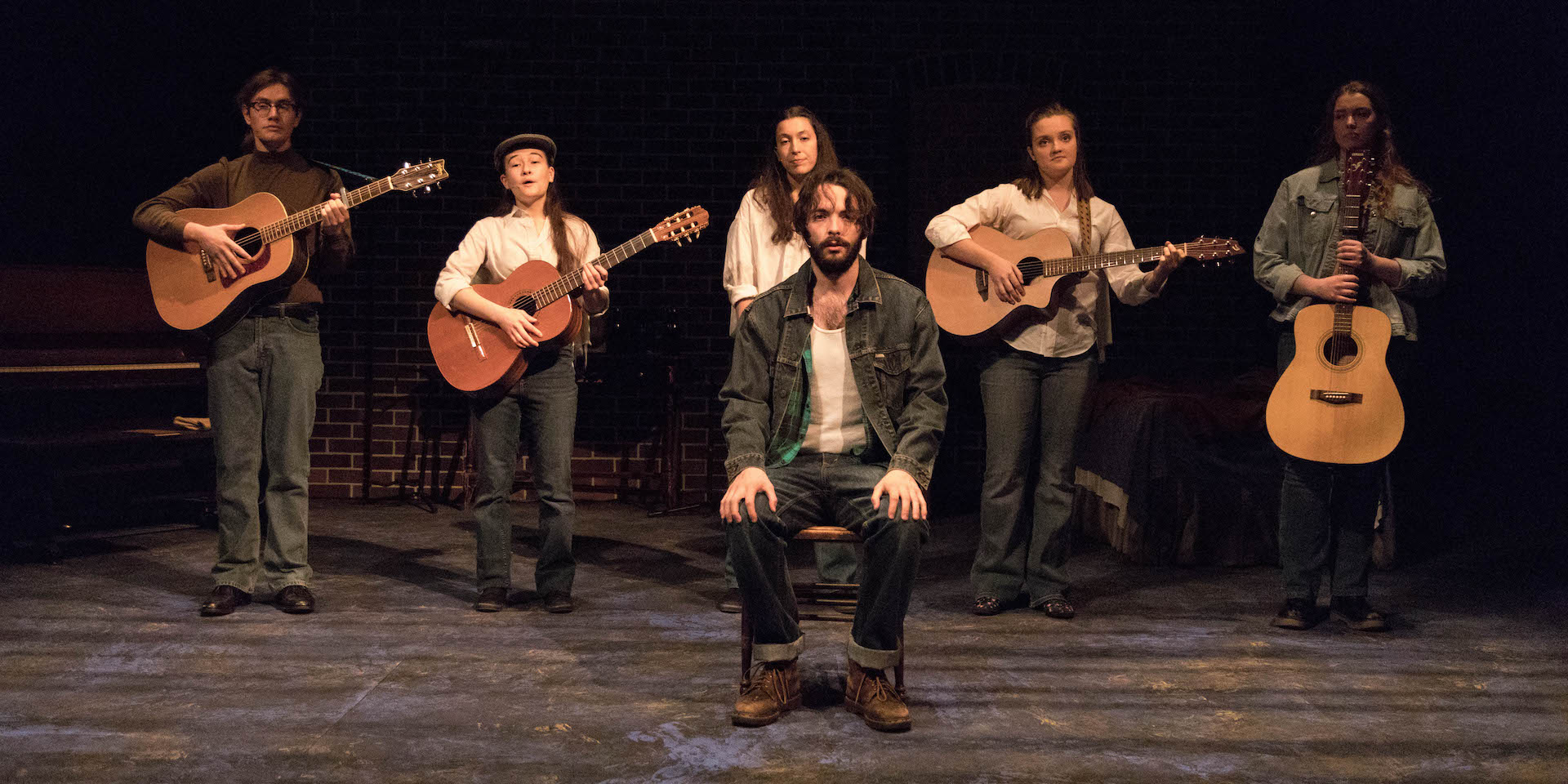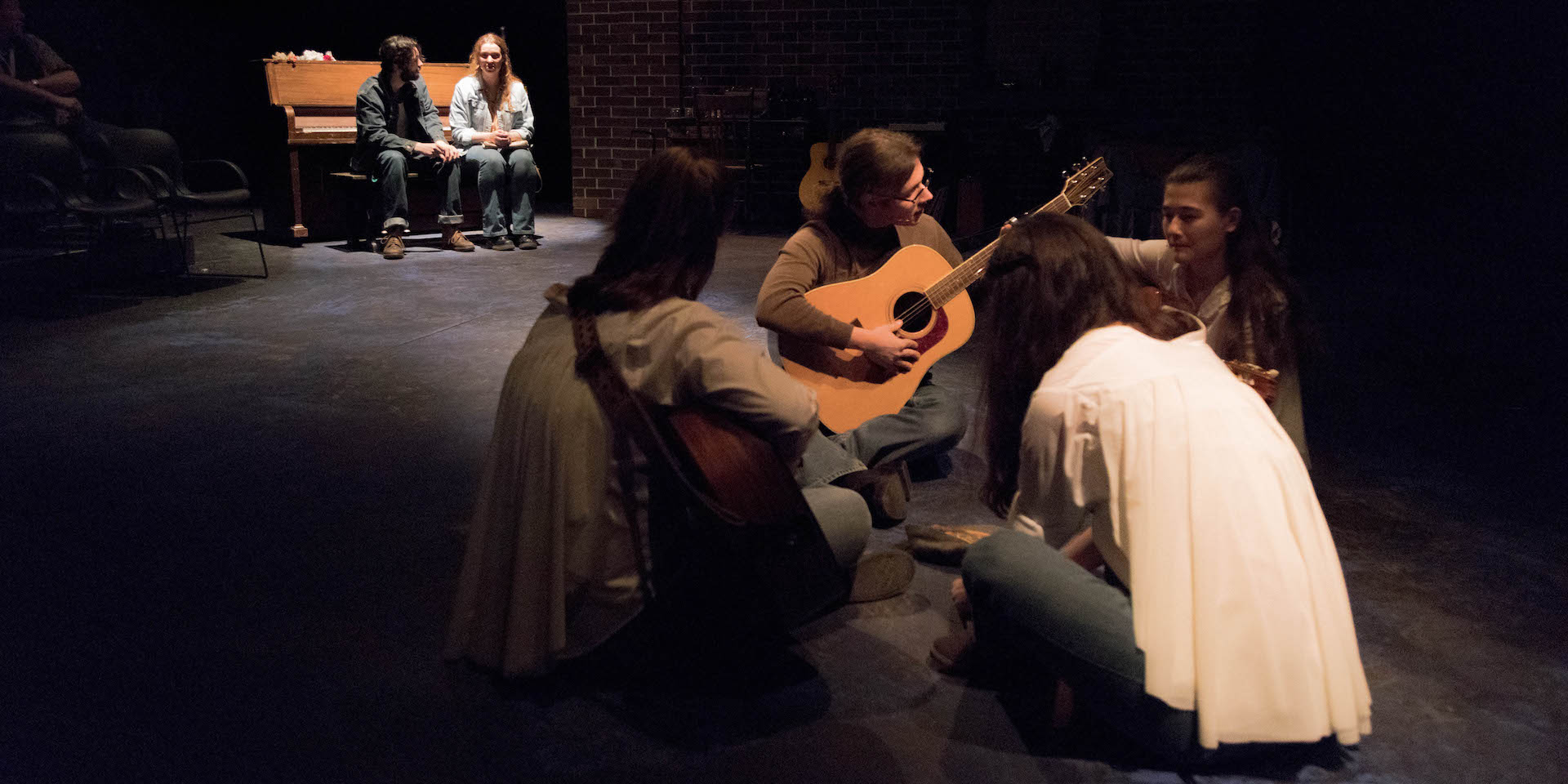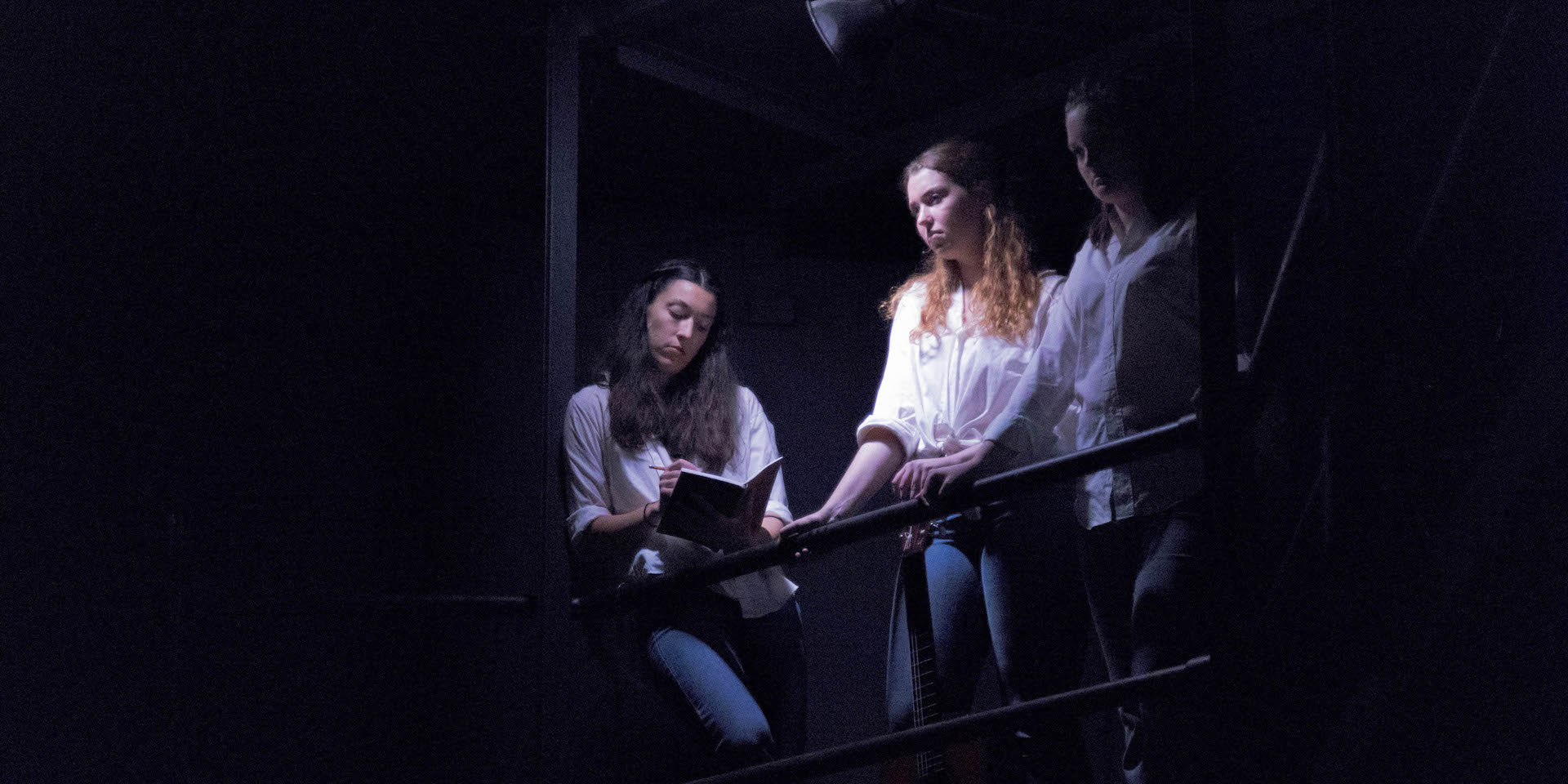
Photo: Dante Haughton ’19
Lily, Rosemary, and the JKB:
A Look at Maybe Tomorrow, Maybe Next Year
By Joe Newman-Getzler
On the surface, it’s quite surprising to see how frequently Bob Dylan has been reinterpreted. I’ve always seen him as one of the most singularly idiosyncratic singer-songwriters in history. His turns of phrase, the personal stories that led to so many classic songs, all feel so unique to him that it’s hard to imagine anyone else performing them. Bob Dylan always seems to be writing songs explicitly for Bob Dylan. His – let’s call it, unique – voice is inextricably tied to tracks like “Subterranean Homesick Blues” and “Like a Rolling Stone.” He’s an individual.
But Bob Dylan is also an example of a phenomenon I call “universal idiosyncrasy,” the idea that even a performer with a unique, original style can have their work told in so many different ways by so many different people. I’d apply this to a lot of the more well-respected artists: The Beatles, Shakespeare, Jane Austen. All singular voices in their artistic disciplines, yet hundreds of other artists have found different ways to interpret their work. Dylan is no exception: in some cases, the covers of his work have even become more famous than the originals (The Jimi Hendrix Experience’s “All Along the Watchtower” was so famous Dylan eventually patterned his live performances on it), but he’s still recognizable for his distinct style of writing.

Photo: Dante Haughton ’19
Even by that margin, Maybe Tomorrow, Maybe Next Year takes on a distinctly personal work of Dylan’s: his 1975 album Blood on the Tracks. That album was created while his marriage was ending, a self-examination of his and Sara Dylan’s relationship, the factors that led to them growing apart, and what would happen after they left each other. It’s straightforward by Dylan’s standards, but also finds a beauty in the pain his songs usually try to mask. Dylan’s notable for writing songs that are character portraits and examinations, but here he turns the tables and puts just as glaring a spotlight on himself. It’s painful and transcendent.
And here’s where that “universal idiosyncrasy” comes in: breaking up is not an experience unique to Dylan, but the way he expresses it is all his own. People can use his words and experiences to inform their own emotions about similar situations. So, personal as Blood on the Tracks may be, it ultimately isn’t that far-fetched to buy into director John Michael DiResta’s concept for Maybe Tomorrow, Maybe Next Year. The project is a collaboration between DiResta and a team of student writers (among those credited are playwriting professor Julia May Jonas, Kallan Dana ’19, Bianca Thompson ’19, and Audrey Erickson ’20), alongside excerpted works by the likes of Jack Kerouac and the Holy Apostles. Their visions combine to create the story of Jack (Caoilin O’Connor ’20), an aspiring musician, and his free-spirited girlfriend Lily (a role shared by an ensemble consisting of Jessie March ’21, Killian Grider ’18, Sam Grant ’18, Rebecca Rovezzi ’18, and Hannah Curtis ’19). The two share a burning desire to get out of Duluth and go to California. Jack wants to get his big break; Lily just wants to leave her life behind. Their relationship fluctuates as motivations change and their strong wills prevent the other from going where they want to go. Along the way, the ensemble recites poems and take up instruments to play songs from Blood on the Tracks, re-contextualized here. The eventual path toward acceptance of an incompatible relationship is bittersweet, but taps into the same kind of emotions as the album.

Photo: Dante Haughton ’19
That’s the important part: pain is universal. The way Bob Dylan examines his pain is unique to himself, but the emotion there is one many people can connect to. Maybe Tomorrow, Maybe Next Year gets at the heart of its source material without being overly reverential. It’s brisk and uncomplicated, like the best Dylan tracks, but the uncomplicated melodies belie complicated emotions. The duality of a complicated break-up, that whole idea of it never being one thing that definitively ends a relationship but something is still there that makes you incompatible with the other person – that’s what the play and the album are all about. Nothing, not even a play, can end with everything answered. As Lily and Jack sit together in a park off Bourbon Street at the play’s end, the supposed finality of a relationship’s end is never felt. Could they reconnect? Will they definitively stay apart? The show is a work in progress, so even the creative team probably have no idea. And that uncertainty is what makes both album and play so painfully familiar. Nothing in life is neat and tidy. If plays are meant to reflect life, why should they be either?
You’ll never stop wondering why or how or what if. That’s what separates good art from great. That’s the impact of Bob Dylan, and that’s how his most personal work is also his most familiar.
PHOTO GALLERY
PRODUCTION CREDITS
Conceived and Directed by: John Michael Diresta
Written by: Kallan Dana ’19, John Michael Diresta, Steve DiUbaldo, Audrey Erickson ’20, Julia May Jonas, Bianca Legarda de Thompson ’19, Christina Rumpf, Jack Kerouac, and the Holy Gospels
Scenic Design: Eva Hershler ’19
Costume Design: Bridget Kerr ’20
Lighting Design: Lea Tanenbaum ’19
Sound Design: Jared Klein
Movement Director: Rebecca Rovezzi ’18
Stage Manager: Rebecca Rose Schilsky ’20
Cast: Hannah Curtis ’20, Samantha Grant ’18, Killian Grider ’18, Caoilin O’Connor ’20, Jessie March ’21, Rebecca Rovezzi ’18
Crew: Jared Klein (Technical Director), James Varkala (Assistant Technical Director), Jessica Thomas (Scenic Artist, Technical Assistant, & Paint Charge), Grant Landau-Williams ’19 (Assistant Director), Max Clifford ’21 (Assistant Stage Manager), Eva Hershler ’19 (Props Master), Julia Guy ’19 (Assistant Costume Designer), Chloe Brush ’18 (Master Electrician), Talia Stewart ’21 (Light Board Operator), Sophie Hatch ’21 (Sound Board Operator)
***
Joe Newman-Getzler ’21 is a first-year and Staff Writer for STLN















